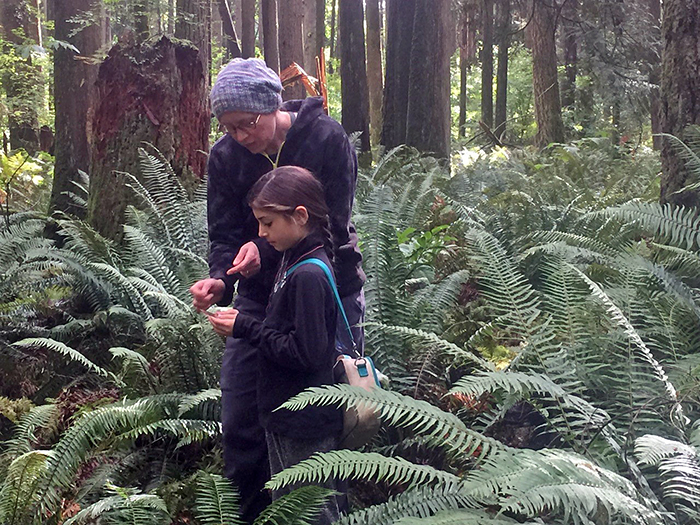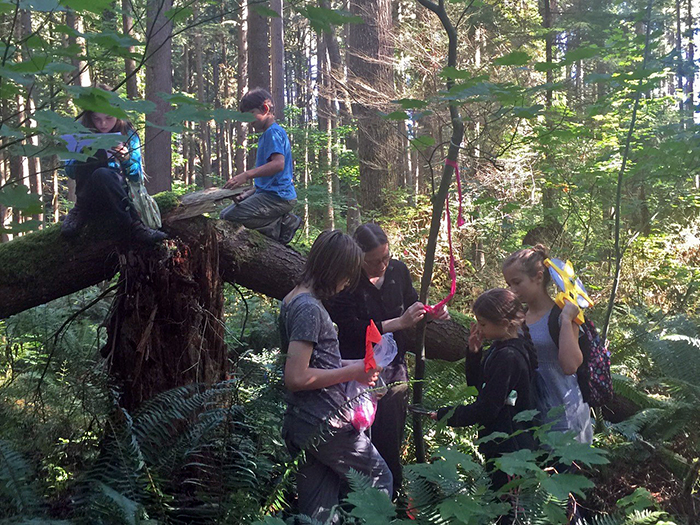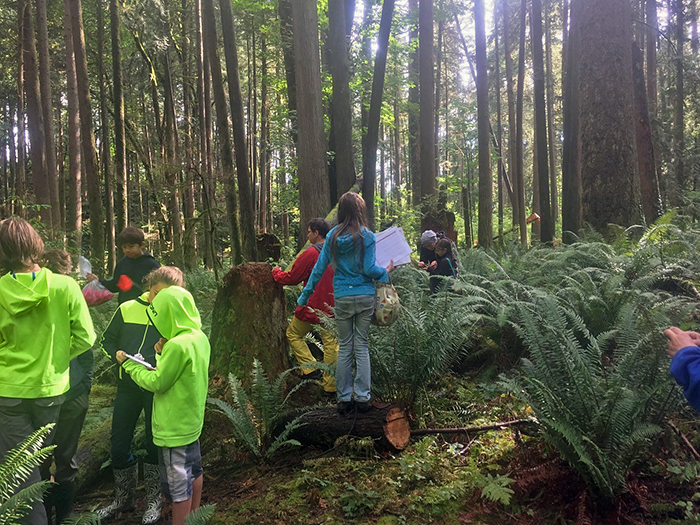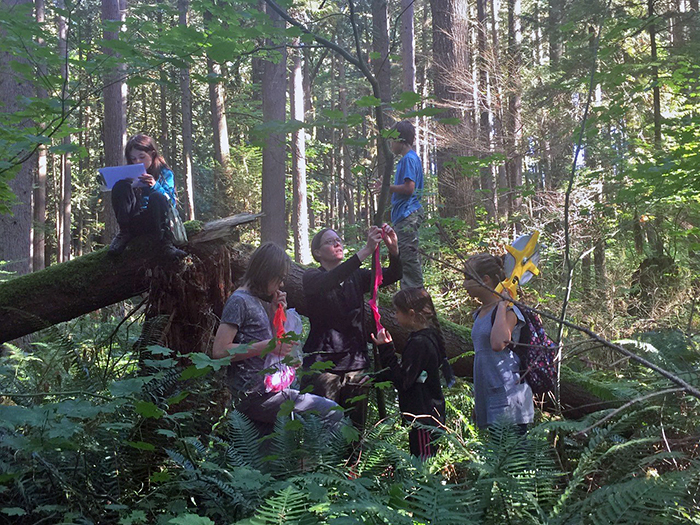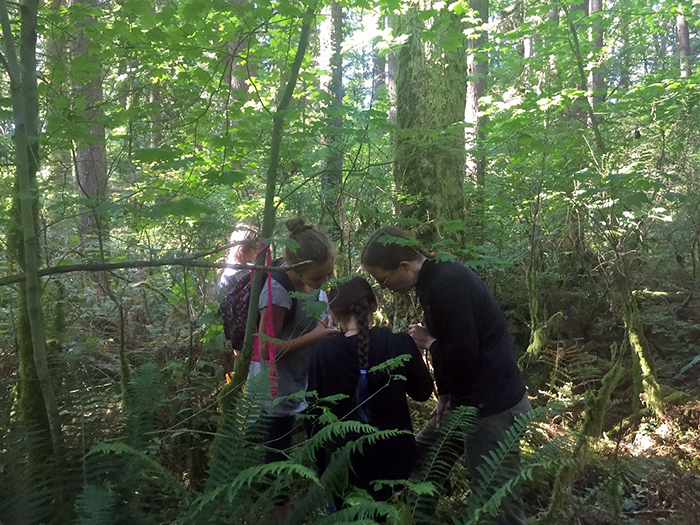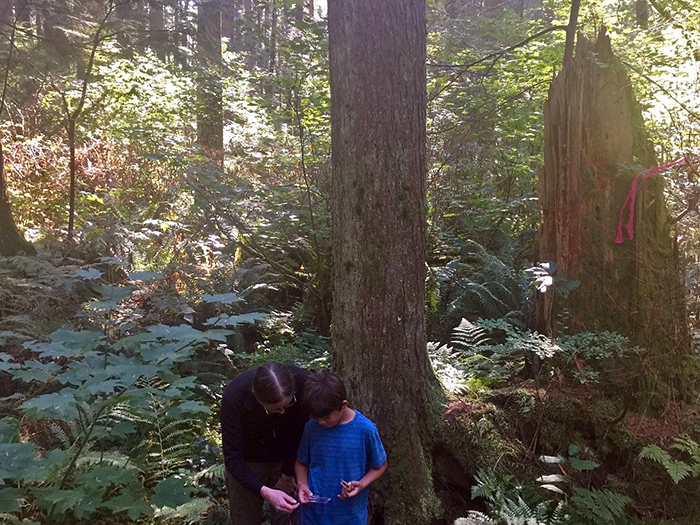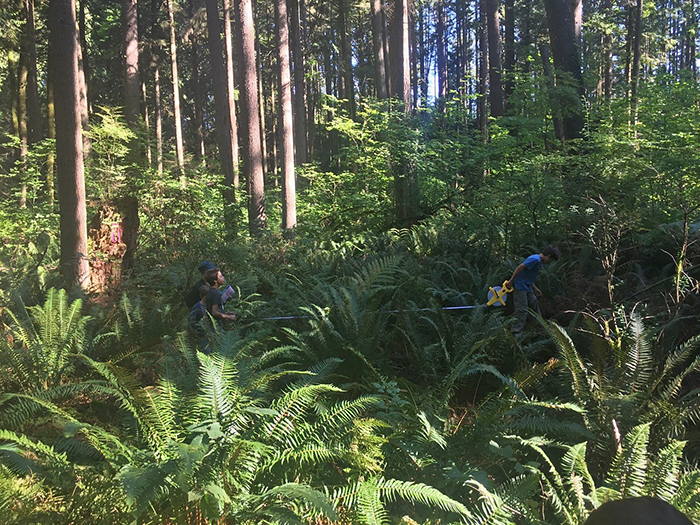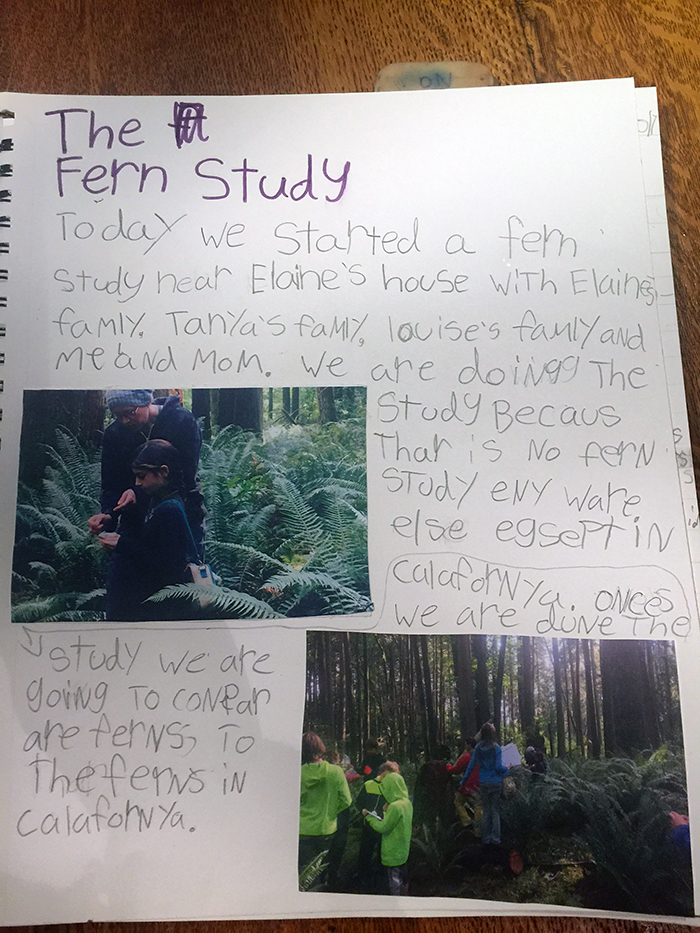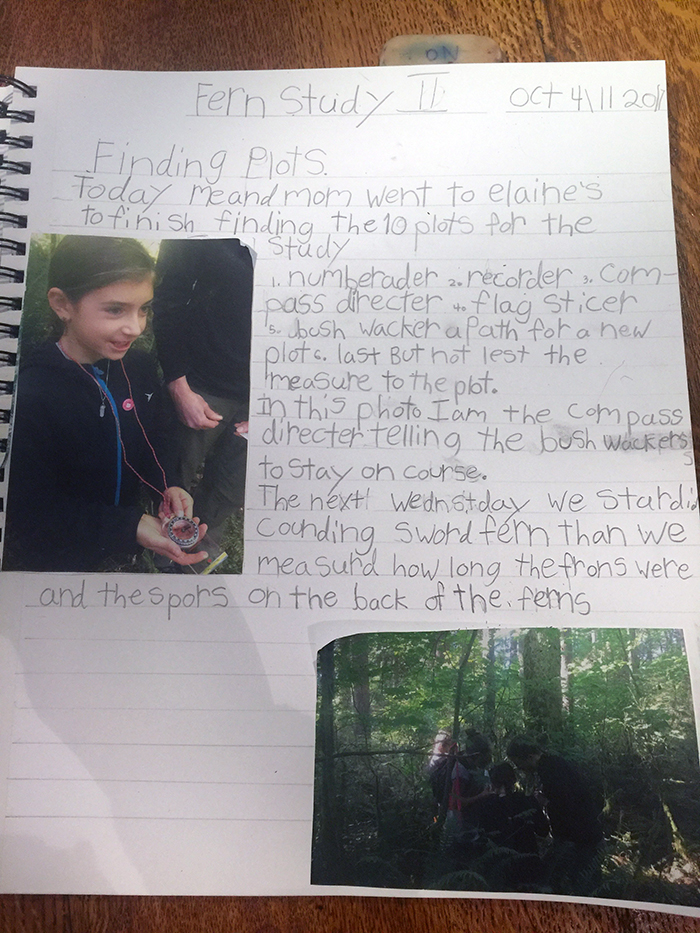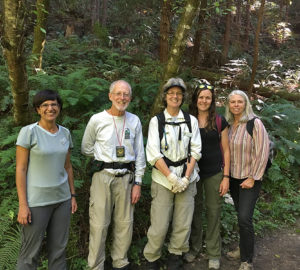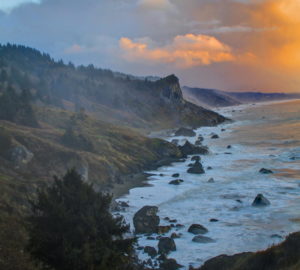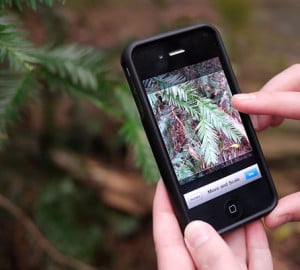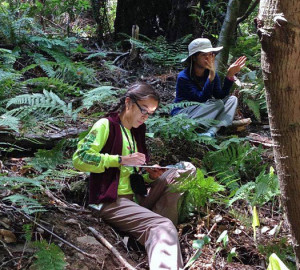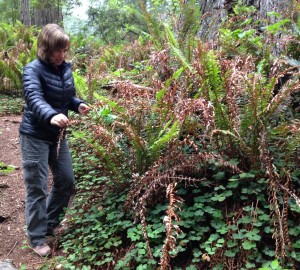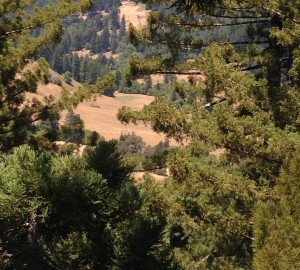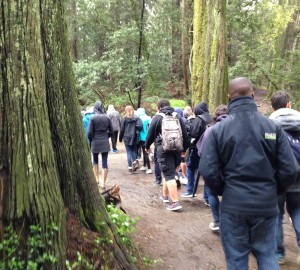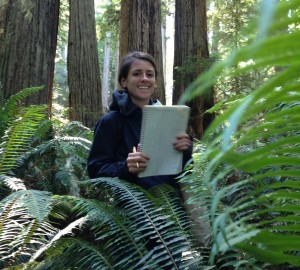Esteban, a trained biologist and friend of the League’s former Director of Science, Dr. Emily Burns, has led the outdoor science class for six years. The group meets outside once a week to work on various projects, which, according to Esteban, range from, “studying salmon and water quality, to playing with pendulums and electricity.”
The students, who are 9 to 13 years old, brought back enthusiastic reports from last summer’s work.
“Today we did a fern study and it was pouring rain!” wrote Mobi and Lucy, ages 10 and 11. “The truth is that it was really wet and dreary but it will make a good story. It was a good experience because we would have never went outside if it weren’t for the fern study.”
Mateo, age 10, wrote: “It’s fun being with all the ferns, especially the ones that are taller than me!”
“The kids are learning not only field techniques, data collection and fern biology, but also teamwork and collaboration among researchers,” Esteban wrote.
Along the central coast of California, western sword ferns grow to thigh-high lengths. But further north, in places like Humboldt County and beyond, they grow into massive, person-sized clumps. Heavier rainfall in the north accounts for ferns growing taller and more abundant, Burns realized in 2008. Western sword fern — which is ubiquitous across the coast redwood range — makes a fantastic indicator of changes in climate and rainfall. Burns began Fern Watch in 2012 and leads the California-based project today.
Every year, Burns, her colleagues, and volunteer field crews measure western sword ferns in eleven coast redwood forests across California. Since the project’s inception, the average length of fronds declined with the recent drought. “This study is creating an important baseline to ultimately measure the impacts of climate change,” Burns says.
In British Columbia, where the students live, lush temperate forests contain many of the same species found in coast redwood forests, including western sword fern. These data coming from outside the coast redwood range will provide a fascinating comparison to help us better understand how forests throughout the Pacific Northwest are responding to weather patterns now and climate change over time.
“The project has become a great teaching tool to engage students in thinking about how climate impacts the forest and how to crowd-source important data collection,” Burns says. “Every measurement that students and volunteers take, adds to our understanding of how healthy redwood forests are today.”
Get Involved – Join Fern Watch!
The Fern Watch field crew wants your participation! To help gather data for the project, download the iNaturalist app (external link) and join “Fern Watch,” under “projects.” Next time you hike, take photos of any ferns you see and jot down observations. Finally, upload your findings. Observations posted on iNaturalist help the field crew determine the best times for field sampling. The more observations, the better!
Learn more on our Fern Watch Project page.
